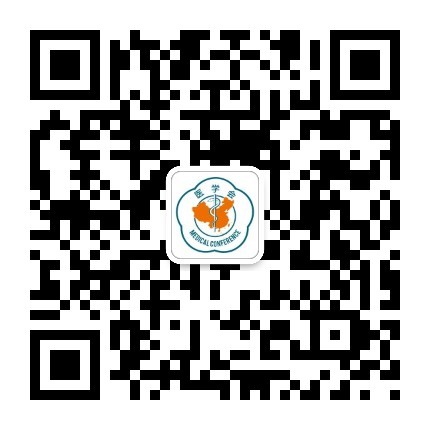【ASCO2013】CID-ATT方案可作为鼻型结外NK/T细胞淋巴瘤一线治疗
2013-05-20 00:00:00 来源:医脉通 阅读:22次
导读:2013年ASCO上一项来自中山大学癌症中心林桐榆教授团队的一项研究表明,CID-ATT方案可作为理想的早期结外NK / T细胞淋巴瘤(ENKL)的一线治疗方案,方案具有较佳的临床活性,在密切监测下较安全,毒性可耐受。对初步确诊的早期ENKL患者,可作为较好的支持性疗法。以下为医脉通为您整理的研究摘要翻译。

林桐榆教授
标题:CID-ATT联合放疗对比CHOP方案联合放疗一线治疗先前未治疗的早期鼻型结节外NK/T细胞淋巴瘤的II/III期随机试验
背景:
与B细胞性非霍奇金淋巴瘤(B-NHL)相比,鼻型结外NK / T细胞淋巴瘤(ENKL)在亚洲更为普遍,且预后更差。目前尚未确定针对ENKL的治疗策略。这项II / III期研究对CHOP-B/IMVD/DHAP-三联循环方案(CID-ATT)和标准CHOP一线治疗方案进行了前瞻性比较。
与B细胞性非霍奇金淋巴瘤(B-NHL)相比,鼻型结外NK / T细胞淋巴瘤(ENKL)在亚洲更为普遍,且预后更差。目前尚未确定针对ENKL的治疗策略。这项II / III期研究对CHOP-B/IMVD/DHAP-三联循环方案(CID-ATT)和标准CHOP一线治疗方案进行了前瞻性比较。
方法:
在2006年1月至2012年1月期间,共有109例(pts)初步诊断为I至II期(Ann Abor分期)的ENKL患者(16-70岁)接受CID-ATT或CHOP随机治疗方案。在CID-ATT治疗方案中,按循环顺序交替进行CHOP-B、IMVD及DHAP治疗,共6个疗程(2个周期)。在6个疗程(2个周期)的CID-ATT方案治疗或6周期的CHOP方案治疗后,对患者受累野进行放疗。在每个DHAP周期,所有患者接受预防性粒细胞集落刺激因子,白介素-11以及促血小板生成素预防性治疗。
在2006年1月至2012年1月期间,共有109例(pts)初步诊断为I至II期(Ann Abor分期)的ENKL患者(16-70岁)接受CID-ATT或CHOP随机治疗方案。在CID-ATT治疗方案中,按循环顺序交替进行CHOP-B、IMVD及DHAP治疗,共6个疗程(2个周期)。在6个疗程(2个周期)的CID-ATT方案治疗或6周期的CHOP方案治疗后,对患者受累野进行放疗。在每个DHAP周期,所有患者接受预防性粒细胞集落刺激因子,白介素-11以及促血小板生成素预防性治疗。
结果:
对109例患者(54例CID-ATT, 55例 CHOP)进行了评估。经中位随访40.3个月后发现,CID-ATT组的OS和PFS较CHOP组显著延长(1年OS:80.2%:78.6%,3年OS:68.0%:42.3%,5年OS:64.2%:34.5%,P = 0.023; 1年PFS:74.9%:59.6%,3年PFS:60.5%:32.0%,5男PFS:60.5%:32.0%,P = 0.016)。 CID-ATT组的完全缓解率远高于CHOP组(CID-ATT:47/54,87.0%;CHOP:29/55,52.7%,P <0.001)。1个治疗周期后实现完全缓解的患者的存活率(3个疗程)明显优于非CR组(5年OS:ATT CR组:75.3%,ATT非CR组:51.5%,CHOP CR组39.3%,CHOP非CR组:31.0%,P = 0.003)。虽然CID-ATT方案治疗组出现III / IV级中性粒细胞减少(30/54,55.6%),血小板减少(33/54,61.1%),但未见治疗相关性死亡病例,尤其是DHAP周期内。
对109例患者(54例CID-ATT, 55例 CHOP)进行了评估。经中位随访40.3个月后发现,CID-ATT组的OS和PFS较CHOP组显著延长(1年OS:80.2%:78.6%,3年OS:68.0%:42.3%,5年OS:64.2%:34.5%,P = 0.023; 1年PFS:74.9%:59.6%,3年PFS:60.5%:32.0%,5男PFS:60.5%:32.0%,P = 0.016)。 CID-ATT组的完全缓解率远高于CHOP组(CID-ATT:47/54,87.0%;CHOP:29/55,52.7%,P <0.001)。1个治疗周期后实现完全缓解的患者的存活率(3个疗程)明显优于非CR组(5年OS:ATT CR组:75.3%,ATT非CR组:51.5%,CHOP CR组39.3%,CHOP非CR组:31.0%,P = 0.003)。虽然CID-ATT方案治疗组出现III / IV级中性粒细胞减少(30/54,55.6%),血小板减少(33/54,61.1%),但未见治疗相关性死亡病例,尤其是DHAP周期内。
结论:
本研究证实,CID-ATT方案可作为理想的一线治疗方案,方案具有较佳的临床活性,在密切监测下较安全,毒性可耐受。对初步确诊的早期ENKL患者,可作为较好的支持性疗法。放疗后的诱导化疗CR对ENKL存活率十分重要。本研究临床试验信息:CSWOG0002。
本研究证实,CID-ATT方案可作为理想的一线治疗方案,方案具有较佳的临床活性,在密切监测下较安全,毒性可耐受。对初步确诊的早期ENKL患者,可作为较好的支持性疗法。放疗后的诱导化疗CR对ENKL存活率十分重要。本研究临床试验信息:CSWOG0002。
>>研究英文摘要(Abstract #8508):
标题:Phase II/III randomized trial of CID-ATT with radiotherapy compared with CHOP with radiotherapy as first-line treatment for previously untreated early staging extranodal NK/T-cell lymphoma, nasal type (ENKL).
Author(s): Tongyu Lin, He Huang, Chao Yong Liang, Chengcheng Guo, Ying Tian, Tingzhi Liu, Xue Ying Li, Mengping Zhang, Huang Ming Hong, Dr.Prem Raj Shrestha; Department of Medical Oncology, Sun Yat-sen University Cancer Center, Guangzhou, China; Sun Yat-sen University Cancer Center, Guangzhou, China; Cancer Center, Sun Yat-Sen University, Guangzhou, China
Background: Extranodal NK/T cell lymphoma, nasal type (ENKL) is more prevalent in Asia and has worse prognosis than B-NHL. No therapeutic strategy is currently identified for ENKL. This phase II/III study was undertaken to compare CHOP-B/IMVD/DHAP-Alternating Triple Therapy (CID-ATT) and standard CHOP regimen as first-line treatment prospectively.
Methods:109 patients (pts) initially diagnosed as ENKL (16-70 ys old) with Ann Abor Stage I to II were randomized to receive CID-ATT or CHOP regimen from Jan 2006 to Jan 2012. CID-ATT alternated among CHOP-B, IMVD, and DHAP, given in alternating sequence for a total of 6 courses (2 circle). Involved field radiation was administered after 6 courses(2 circle) of CID-ATT regimen or 6 cycles of CHOP regimen. All pts received prophylactic granulocyte colony-stimulating factor, interleukin-11and thrombopoietin for each DHAP cycle.
Results: 109 pts were evaluable (54CID-ATT; 55 CHOP). With a median follow-up of 40.3months,OS and PFS was significantly prolonged with CID-ATT compared with CHOP (1yOS :80.2% vs 78.6%, 3yOS:68.0% vs 42.3%, 5yOS: 64.2% vs 34.5%,P=0.023; 1yPFS: 74.9% vs 59.6%, 3yPFS:60.5% vs 32.0%, 5yPFS: 60.5% vs 32.0% ; P=0.016). Compared to CHOP group, CID-ATT group has a much higher complete remission rate (CID-ATT:47/54,87.0 % vs CHOP:29/55,52.7%, P<0.001). The survivals for pts who achieved CR after One circle (3 courses) were significantly better than those who were in non-CR group.(5yOS: CR group in ATT:75.3%, non-CR group in ATT:51.5%, CR group in CHOP:39.3%, non-CR group in CHOP:31.0%; P=0.003). No treatment related death was observed, although Grade III/IV neutropenia (30/54,55.6%) and thrombocytopenia (33/54,61.1%) were observed in CID-ATT regimen, especially in DHAP cycle.
Conclusions: Our study has demonstrated that the CID-ATT regimen as an optimal first-line therapy achieved promising clinical activity with safe and tolerated toxicity under close monitoring and good supportive care of untreated early staging ENKL pts. CR of induce chemotherapy following radiotherapy is very important for ENKL survival. Clinical trial information: CSWOG0002.
Background: Extranodal NK/T cell lymphoma, nasal type (ENKL) is more prevalent in Asia and has worse prognosis than B-NHL. No therapeutic strategy is currently identified for ENKL. This phase II/III study was undertaken to compare CHOP-B/IMVD/DHAP-Alternating Triple Therapy (CID-ATT) and standard CHOP regimen as first-line treatment prospectively.
Methods:109 patients (pts) initially diagnosed as ENKL (16-70 ys old) with Ann Abor Stage I to II were randomized to receive CID-ATT or CHOP regimen from Jan 2006 to Jan 2012. CID-ATT alternated among CHOP-B, IMVD, and DHAP, given in alternating sequence for a total of 6 courses (2 circle). Involved field radiation was administered after 6 courses(2 circle) of CID-ATT regimen or 6 cycles of CHOP regimen. All pts received prophylactic granulocyte colony-stimulating factor, interleukin-11and thrombopoietin for each DHAP cycle.
Results: 109 pts were evaluable (54CID-ATT; 55 CHOP). With a median follow-up of 40.3months,OS and PFS was significantly prolonged with CID-ATT compared with CHOP (1yOS :80.2% vs 78.6%, 3yOS:68.0% vs 42.3%, 5yOS: 64.2% vs 34.5%,P=0.023; 1yPFS: 74.9% vs 59.6%, 3yPFS:60.5% vs 32.0%, 5yPFS: 60.5% vs 32.0% ; P=0.016). Compared to CHOP group, CID-ATT group has a much higher complete remission rate (CID-ATT:47/54,87.0 % vs CHOP:29/55,52.7%, P<0.001). The survivals for pts who achieved CR after One circle (3 courses) were significantly better than those who were in non-CR group.(5yOS: CR group in ATT:75.3%, non-CR group in ATT:51.5%, CR group in CHOP:39.3%, non-CR group in CHOP:31.0%; P=0.003). No treatment related death was observed, although Grade III/IV neutropenia (30/54,55.6%) and thrombocytopenia (33/54,61.1%) were observed in CID-ATT regimen, especially in DHAP cycle.
Conclusions: Our study has demonstrated that the CID-ATT regimen as an optimal first-line therapy achieved promising clinical activity with safe and tolerated toxicity under close monitoring and good supportive care of untreated early staging ENKL pts. CR of induce chemotherapy following radiotherapy is very important for ENKL survival. Clinical trial information: CSWOG0002.
点赞 收藏



